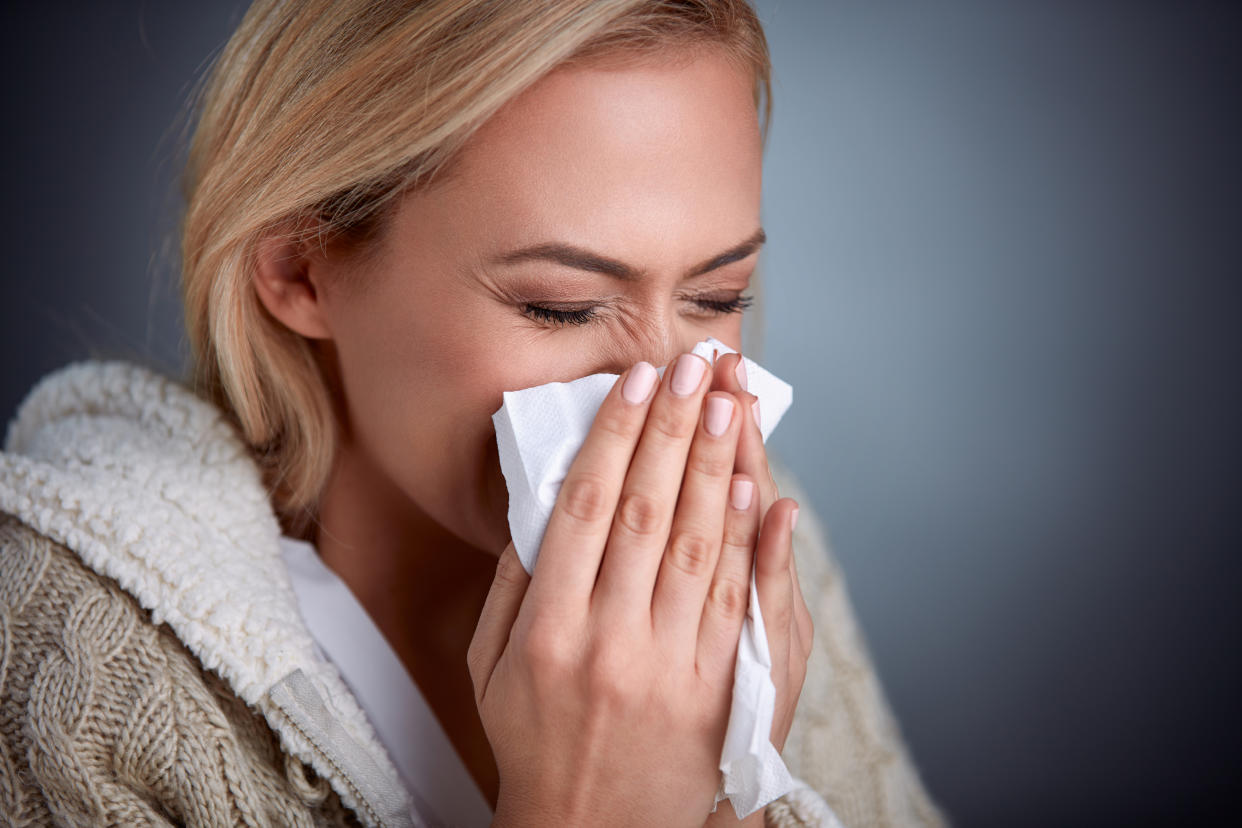Not sure whether you need antibiotics? A runny nose is a tell-tale sign you don’t

With antibiotic resistance well underway, a doctor is urging the public not to “demand” the drugs when battling a runny nose.
Antibiotics are prescribed to prevent or treat bacterial infections, which include everything from pneumonia and tuberculosis to blood poisoning and Lyme disease.
READ MORE: What is antibiotic resistance - and when will it strike?
Over the years, many doctors have mistakenly doled them out to people battling viruses.
Unlike other drugs, the more antibiotics are used, the less effective they become.
The effects are already evident, with “superbugs” like MRSA, C.difficile and some gonorrhoea strains no longer responding to go-to drugs.
With bacteria and viruses having the potential to cause similar symptoms - think fever, cough and a sore throat - it can be difficult to gauge what infection you have and how best to treat it.
“The giveaway is a runny nose,” Dr Chris Smith, consultant virologist and head of the “Naked Scientists” at the University of Cambridge, told Yahoo UK.
“This is caused by an upper respiratory tract infection, which is nearly always a virus.
“Bacteria infections don’t tend to do that.”
While antibiotics are not available without a prescription, GPs can feel pressured to give them out.
READ MORE: This microbe is spreading antibiotic resistance to other bacteria
“People get symptoms and demand antibiotics; some GPs cave in,” Dr Smith said.
“It becomes a self-fulfilling prophecy.
“You believe the antibiotics cured it, but the virus would have gone anyway.”
As well as a runny nose, sore throats are caused by a virus around 95% of the time.
Rather than asking for antibiotics, Dr Smith recommends cough drops that include menthol, like Covonia.
“Menthol has a cooling sensation,” he said.
“Cough drops also increase saliva flow, which washes away germs and lubricates the throat.”
If symptoms do not ease - or worsen - after around five days, see a GP.
“Don’t see your doctor immediately if it’s trivial,” Dr Smith said.
“You will trade viruses in the waiting room.”
What is antibiotic resistance?
The World Health Organization calls antibiotic resistance “one of the biggest threats to global health”, with no one immune to the crisis.
Infections are set to become increasingly difficult to treat, leading to longer hospital stays, more expensive care and a rise in deaths.
In 2015, antibiotic use in England alone had increased by 6.5% over the past four years, government data shows.
Random mutations take place within bacteria at a rapid rate. Exposure to an antibiotic “selects” for mutations that protect the bug from destruction.
Bacteria can then pass this genetic advantage to future generations or “horizontally” to other bugs.
Even when correctly given out for bacterial infections, many fail to take antibiotics as prescribed, coming off them when they start to feel better.
This could mean they stop treatment before the pathogen has been completely eradicated, giving it a better shot of resistance.
READ MORE: This is what people think is the biggest threat to global health
At least 30% of antibiotics prescribed in the US are “unnecessary”, according to the Centers for Disease Control and Prevention (CDC).
As a result, more than 2.8 million antibiotic-resistant infections arise every year, killing over 35,000 people, it adds.
One of the most well known is MRSA. This “superbug” is resistant to a widely-used antibiotic, hence its name - methicillin-resistant Staphylococcus auerus.
S. auerus lives harmlessly on the skin of around one in 30 people, according to the NHS.
If it gets into the body, however, it can infect the blood, lungs and urinary tract.
For now, MRSA is usually treatable via antibiotics that still work against it.
Yet, the infection kills more Americans every year than HIV, AIDS, Parkinson’s, emphysema and murder combined, medical writer C Lee Ventola wrote in the journal Pharmacy & Therapeutics.
Prescriptions aside, farmers in the US and parts of Asia also routinely give healthy animals antibiotics to promote growth and prevent disease. This is banned in Europe.
Around 80% of antibiotics sold in the US are used in animals, according to scientists from the University of California, San Francisco.
Research suggests antibiotic-resistant bacteria could reach humans via meat.

How you can help prevent antibiotic resistance
Antibiotics can save lives and should always be taken if prescribed.
There are, however, things you can do to help stem the spread of resistance.
If you feel your doctor is too keen to suggest antibiotics, the CDC recommends asking if there is another way to combat the infection.
In cases where antibiotics are necessary, take the drugs exactly as prescribed, never sharing or skipping doses.
When finished, throw out leftover pills, rather than storing them for future use.
The US Food and Drug Administration recommends mixing leftover drugs with “something undesirable”, like coffee grounds or cat litter.
This reportedly makes it less appealing for anyone going through bins, like children or pets.
Put the mix in a sealed bag and throw it away.
Antibiotics are ineffective against viruses. The CDC stresses you should therefore not pressurise your GP to prescribe them if you have a cold or flu.
Many bacterial infections also have vaccines, such as diphtheria and whooping cough.
Keeping up-to-date on your jabs could prevent the infection in the first place, with antibiotics never being required.


